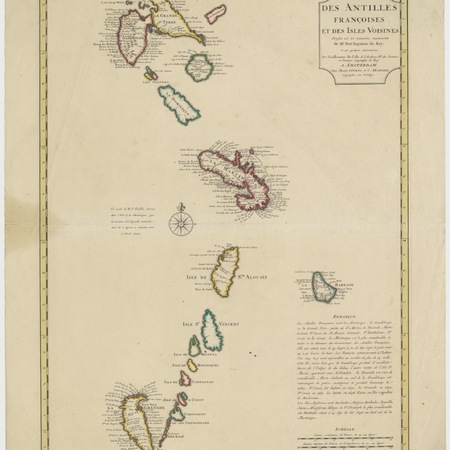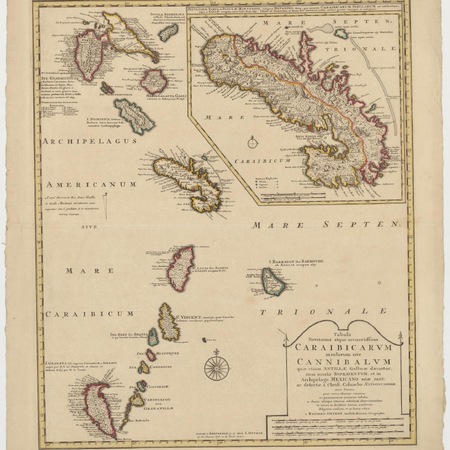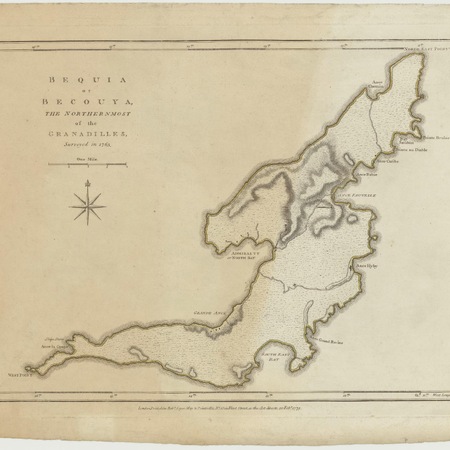Bequia was under French control in the 18th century and during the Seven Years' War with England, the island was used by the fleets of their Spanish and Dutch allies to take on supplies, while British ships were banned. The Treaty of Paris (1763) produced a significant re-alignment in the map of the Caribbean; St. Vincent and the Grenadine islands, including Grenada, were given to the British in exchange for Guadeloupe, Martinique and St. Lucia. The name Petit Martiniquecomes from this era, as does Petit Saint Vincent. In 1779 the French seized the island, despite the Treaty of Paris, but were forced to relinquish control to Britain again soon after. The early 18th century saw the development of a sugar industry and the production of related products including molasses and rum. Other major produce included coffee, indigo and arrowroot. At one point in time, the islands of St. Vincent and the Grenadines were the single largest producer of arrowroot starch in the world. Currently, Hairoun and Vincy strong rum are major export products primarily to the European Union. Under a programme instituted by Great Britain to give land to indigent settlers James Hamilton, father of Alexander Hamilton, moved from St. Croix to Bequia in 1774 where he remained until 1790. The land granted to Hamilton lies along the shore of Southeast Bay. Despite his son's frequent gifts of money and entreaties to immigrate or at least visit him, neither visited the other


